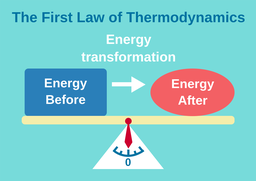WARNING – The following is a dispassionate discussion of the practical limitations of alternative energy without any influence from feelings or wishful thinking.
There is a finite limit to the amount of energy input. Solar radiation at the earth’s surface is limited to a certain quantity of energy per unit area. On a cloudless sunny day at any given location, or at any specific time, this input is fixed. According to the first law of thermodynamics, the amount of energy falling on the surface cannot be created nor destroyed. It can be only converted from one form to another, albeit with a loss in efficiency but the quantity or amount cannot be increased beyond what is coming in.

The second limitation is capture and conversion of solar energy involves a loss due to inefficiency. This is a result of the second law of thermodynamics. The energy output is always less than the energy input. The quality of the useful energy output is degraded and for any system, there is a maximum theoretical efficiency that cannot be exceeded under any circumstances.

What we have then is a limited amount coming in and somewhat less going out based on the laws of nature, before we even consider the nighttime hours, the twelve or so hours that no energy is coming in, and the effect of overcast or cloudy days when the amount coming in during the twelve hours of daylight is greatly reduced.
So for any given location, the maximum theoretical energy output that we can capture and convert is reduced considerably from that which is coming in from the source. This is the useful available energy.
If we compare the available solar energy after capture, conversion, and transport to the energy demand, that is the amount required to heat the house or heat water or produce electrical power to run an air conditioner, we find that a very large area of solar collectors is needed to satisfy the demand. It becomes apparent that the capture of solar energy from radiation from the sun requires an area for the collection that is totally impractical for all intents and purposes. Or conversely to meet the demand, solar can only provide a fraction of the demand with a collection device of a practical size. I wish we had understood this dilemma before we started. But we didn’t. As a result, the observed performance was unfortunately disappointing. We finally realized that we can’t get there from here. At best, we can only get part way there from here.